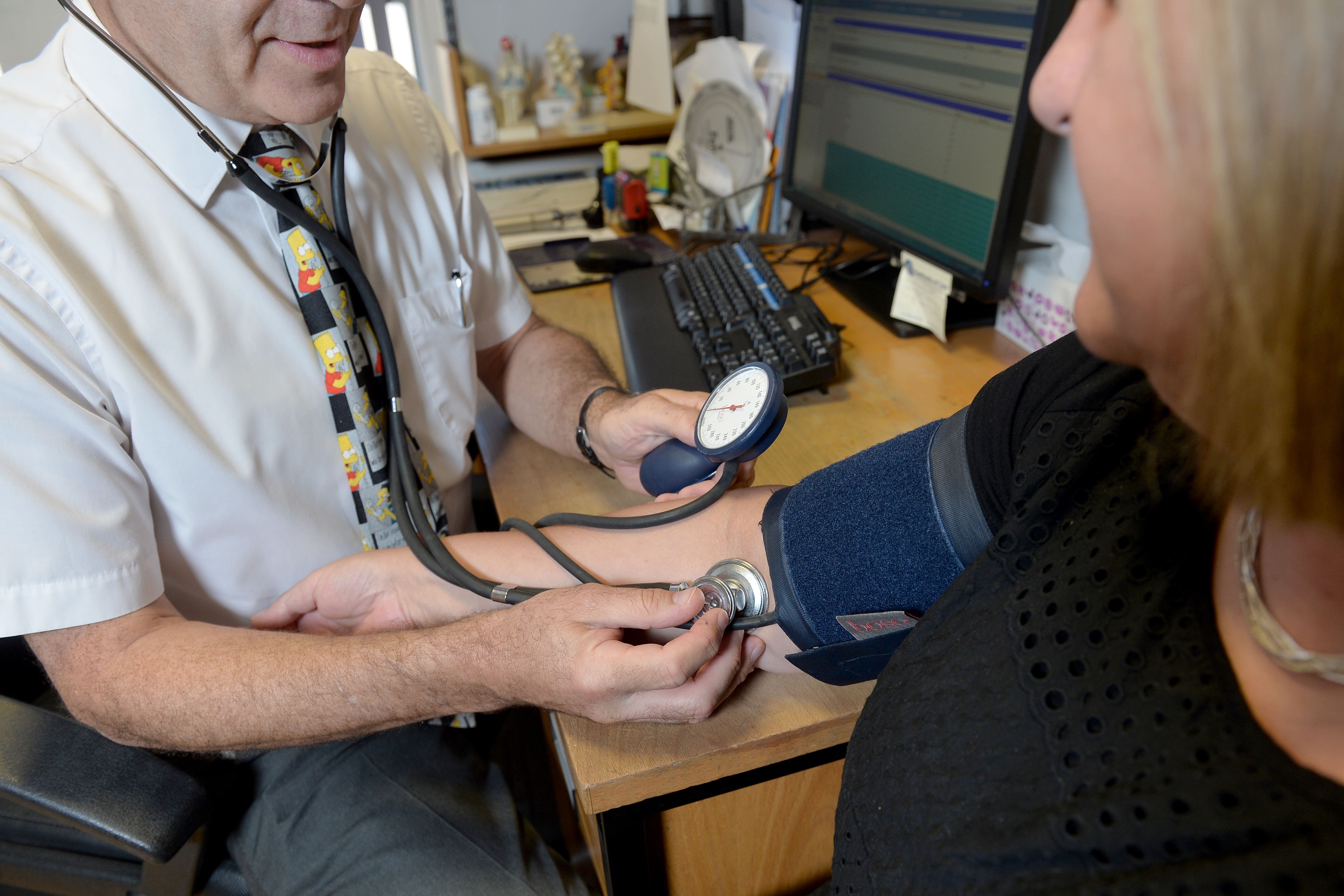Women urged to know blood pressure to help prevent heart disease and stroke
High blood pressure is the most deadly risk factor for women worldwide, experts suggest.

Your support helps us to tell the story
From reproductive rights to climate change to Big Tech, The Independent is on the ground when the story is developing. Whether it's investigating the financials of Elon Musk's pro-Trump PAC or producing our latest documentary, 'The A Word', which shines a light on the American women fighting for reproductive rights, we know how important it is to parse out the facts from the messaging.
At such a critical moment in US history, we need reporters on the ground. Your donation allows us to keep sending journalists to speak to both sides of the story.
The Independent is trusted by Americans across the entire political spectrum. And unlike many other quality news outlets, we choose not to lock Americans out of our reporting and analysis with paywalls. We believe quality journalism should be available to everyone, paid for by those who can afford it.
Your support makes all the difference.All women should know their blood pressure to prevent heart disease and stroke, doctors have warned.
Women are being urged to take their blood pressure seriously, with cardiologists from the European Society of Cardiology (ESC) highlighting that the risk for heart disease increases at a lower level in women compared with men.
The experts suggest it could be just a matter of years before the threshold for normal blood pressure will be lower in women than men.
Issuing the advice on World Hypertension Day, the doctors said women should start treating high blood pressure (hypertension) in middle age in order to prevent symptoms such as shortness of breath and fatigue later in life.
My message to all women is to take your blood pressure seriously, know your values and convince your doctor that if it is too high then you need treatment
Professor Angela Maas, emeritus director of the Women’s Cardiac Health Programme, Radboud University Medical Centre, the Netherlands, said: “Cardiovascular disease is the leading cause of death in women.
“The risk for cardiovascular disease increases at a lower blood pressure level in women compared to men.
“My message to all women is to take your blood pressure seriously, know your values and convince your doctor that if it is too high then you need treatment.
“Don’t underestimate the long-term effects of high blood pressure.”
She added: “One of the most important consequences of hypertension in women is a type of heart failure in which the heart muscle is stiff.
“There are few treatments for that condition, so if you want to avoid symptoms such as shortness of breath, fatigue and fluid retention when you are over 70, you have to start treating high blood pressure in middle age. If you wait 20 years, it is too late.”
Data suggests that around one in three women have hypertension across the world, and globally the condition has been named the most important risk factor for death in women
Prof Maas said: “Despite its importance, we know that hypertension is more often underestimated and not, or insufficiently, treated in women compared to men.
After the age of 65, hypertension is more common in women than men
“One of the reasons may be that below the age of 50, hypertension is more prevalent in men.
“This reverses in the years after menopause so that after the age of 65, hypertension is more common in women than men.”
The experts suggest it is a misconception that high blood pressure does not cause symptoms.
Instead, they say, symptoms are more pronounced in women but may be mistaken for menopause, anxiety or stress.
Young and middle-aged women with high blood pressure often report palpitations, chest pain, pain between the shoulder blades, headaches, difficulty concentrating, shortness of breath, tiredness, fluid retention, poor sleep, hot flushes and a feeling their bra is too tight.
According to the experts, hypertension in midlife is more harmful in women than in similarly aged men, and is a stronger risk factor for heart attack, cognitive decline and dementia.
The probability of stroke increases at a lower blood pressure level in women than in men, while high blood pressure raises the risk for heart failure in women by three-fold, compared with two-fold in men.
Prof Maas said: “Hypertension is currently defined as a systolic blood pressure of at least 140 mmHg and/or diastolic blood pressure of 90 mmHg or higher.
More research is needed before there is any change in treatment guidelines but I expect that within five years the threshold for normal blood pressure will be lower in women than men
“But discussions are under way about whether normal blood pressure values should be lower in women compared to men.
“More research is needed before there is any change in treatment guidelines but I expect that within five years the threshold for normal blood pressure will be lower in women than men.”
Certain life events, such as having migraines from their teenage years, predispose women to developing high blood pressure.
Other factors are having two or more miscarriages, hypertension during pregnancy (which affects around one in seven pregnant women) and preeclampsia (a more severe form of hypertension during pregnancy).
Prof Maas continued: “Women have more of those specific life events than men.
“Physicians can use these clues to identify middle aged women at higher risk of hypertension and to signal that blood pressure monitoring needs to be taken more seriously.”
Women are advised to start annually monitoring their blood pressure at the age of 40 if they have hypertension in their family, or if they had hypertension during pregnancy.
Women with preeclampsia should check their blood pressure from that pregnancy onwards at least twice a year.
Women with no issues during pregnancy and no family history should start yearly measurement at age 50 when they enter menopause.